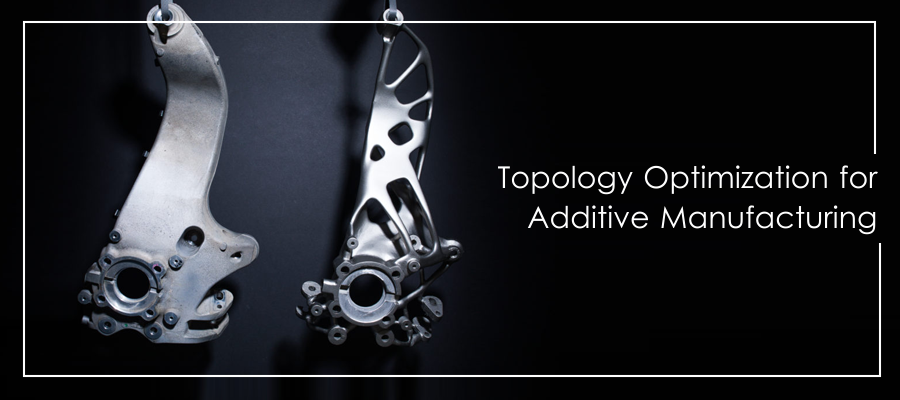

Additive Manufacturing is the potentially disruptive manufacturing technology in which a structural component is fabricated layer by layer via digital information. Fabricating structural components layer by layer from digital information provides the benefits of increased design freedom, including the ability to exploit the results of topology optimization algorithms to significantly lightweight parts, eliminating system part count by consolidating assemblies into fewer parts, reducing the lifecycle time between concept, design, manufacture, and validated component delivery, a buy-to-fly ratio that approaches unity thereby leading to significant raw material cost savings. AM also has the ability to incorporate added functionality, such as internal cooling channels and thermowells into components; manufacture highly complex geometries that would be impossible or very difficult to be realized with traditional methods.

Process Flow for the fabrication of AM components
Topology optimization makes the lightweight parts without compromising their strength. Topology optimization can help to produce parts with enhanced performance and mechanical properties. It is a technique that optimises the geometry of an object using mathematical calculations. Using topology optimization software, designers can optimise the material distribution in specific places as the software tool analyses the stresses on the shape and removes any unnecessary material from the design. Which areas of the part are to be optimised is based on several requirements, such as load, deformation, stiffness constraints and boundary conditions. In other words, topology optimization helps to create the best possible structure of a given part.
Topology optimization pushes the boundaries of design freedom even further, offering a range of benefits and opportunities for additive manufacturing in the most demanding industries. Additionally, topology optimization tools enable the ability to maximise thickness in the areas that need it most, as well as reduce the mass of a part by removing the material in areas that are not exposed to boundary loads. Aerospace is one of the top adopters of topologically optimised designs, thanks to the benefits of creating lightweight parts, reduced support structures and preserved strength of the parts produced. Optimised and additively manufactured components prove to be highly valuable in cutting down costs for launching satellites and space vehicles. A good example is that of aerostructure manufacturer STELIA Aerospace, which has used topology optimisation to produce aeroplane fuselage panels with enhanced stability. There is also an added ecological benefit, with the topology-optimised design leading to less material waste. Since topology optimization allows additional features such as pore diameter, density, and mechanical properties to be incorporated in specific areas of the engineered component, it is now possible to create functional parts with optimal weight and mechanical properties.

Steps involved in the topology optimization of an engineering product